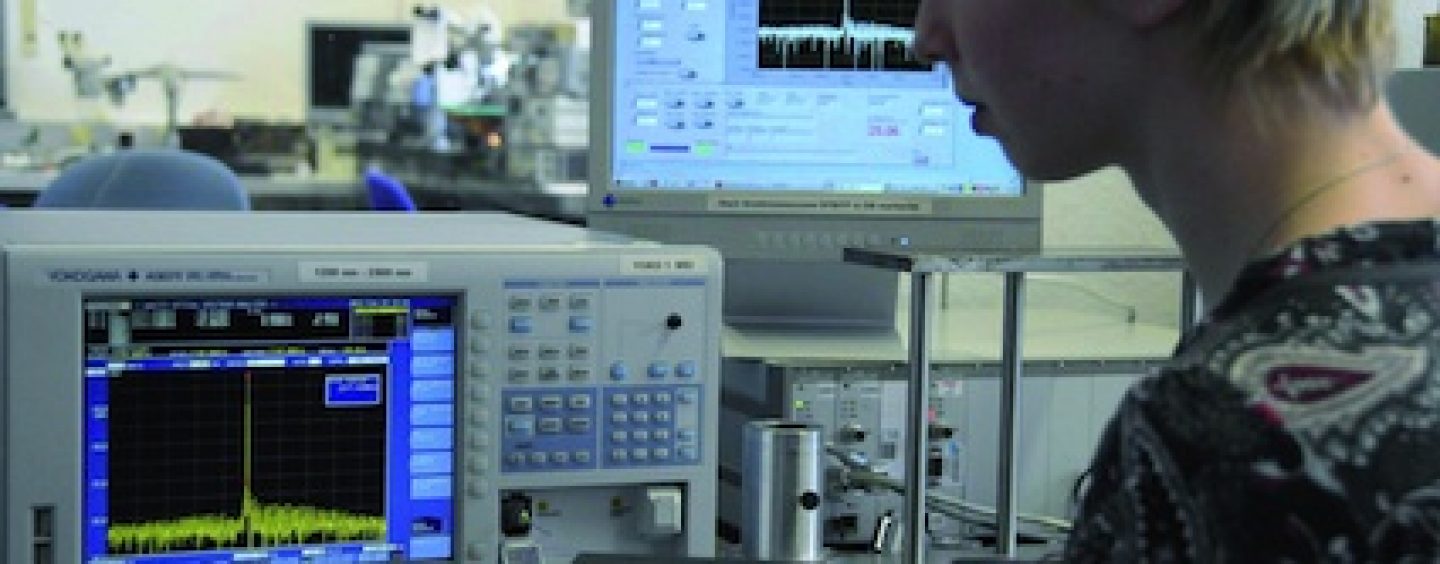Highly accurate detection of trace gases in gas mixtures is of great interest in many different areas. For example, the detection of gas leaks and monitoring of the concentrations of explosive gases can help avoid potential disasters. In addition, the analysis of gases in industrial processes allows the optimization of operating parameters – possibly to minimize the risk of producing undesired end products, such as carbon monoxide from incomplete combustion. Even on space missions trace gas analysis is used for the exploration of remote planets.
Gas detection
A highly accurate method for the detection of gases in low concentrations is based on the use of laser light. This technique relies on the fact that each type of gas molecule has distinctive vibrational and rotational states which can be excited by a specific quantity of energy. With a laser that emits photons of this exact energy, specific molecules inside a gas mixture can be stimulated to “dance”. This process can be observed indirectly by measuring the amount of laser light being absorbed by the gas molecules, depending on their concentration.
To achieve high accuracy in the absorption measurement, a laser is required that emits light only at the energy (and hence frequency) that is relevant for the gas type being examined. The frequency of such a single-mode laser can then be tuned extremely precisely around the molecule’s absorption frequency by a variation of the operating current.
Single mode lasers using distributed feedback
German laser manufacturer nanoplus develops single-mode lasers by making use of a patented technology for distributed feedback (DFB). For this technique, metal gratings with dimensions in the 100 nm range are patterned next to ridge structures in semiconductor material using electron-beam lithography. The grating structure acts as a filter for the DFB laser’s resonator modes, allowing only one frequency/wavelength to pass with low loss.
To verify the high spectral quality of the lasers, nanoplus uses optical spectrum analysers (OSA) from Yokogawa. This instrument offers the great advantage that its accessible spectral range extends well beyond typical wavelengths for telecommunications (around 1700 nm). As a result, the instrument can be used to characterise DFB laser products, for example, for an application in the sensing of water vapour (around 1877 nm), carbon dioxide (2004 nm) and carbon monoxide (2332 nm).
With OSAs like AQ6375B, the individual Fabry-Pérot laser modes can be clearly resolved. In addition, the high dynamic range enables the demonstration of single-mode laser operation with a side-mode suppression ratio of more than 50 dB. The detection of trace gases with concentrations of less than one part per billion in a gas mixture can be achieved with these high-quality DFB lasers. This sensitivity can be compared to finding a single person out of the entire population of China (a population well beyond a billion people) – or even finding the proverbial needle in a haystack!
Out of this world
One nanoplus laser, for example, is currently on board NASA’s flagship rover “Curiosity” on its way to Mars, with the intention to detect traces of water, methane and carbon dioxide – millions of kilometres away from Earth. To achieve such high throughputs of characterized lasers, nanoplus uses a fully automated test setup using the GPIB interface of the AQ6375B. Despite the relatively complex measurement process, the test setup allows for a quick determination of the lasers’ tuning properties at different chip temperatures and operating currents. The lasers are tested in the range from 1200 to 2400 nm before they are supplied to the customers, according to their applications.



No Comments so far
Jump into a conversationNo Comments Yet!
You can be the one to start a conversation.